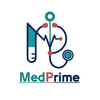L6 QS BANK, BMS201.pdf
Document Details

Uploaded by MedPrime
New Mansoura University
Tags
Full Transcript
Part One: Simple MCQs 1. What is the sole source of energy production in mature red blood cells (RBCs)? a) Oxidative phosphorylation b) Anaerobic glycolysis c) Fatty acid oxidation d) Krebs cycle 2. Which glucose transporter facilitates glucose uptake in RBCs? a) GLUT-1 b) GLUT-2 c) GLUT-3 d) GL...
Part One: Simple MCQs 1. What is the sole source of energy production in mature red blood cells (RBCs)? a) Oxidative phosphorylation b) Anaerobic glycolysis c) Fatty acid oxidation d) Krebs cycle 2. Which glucose transporter facilitates glucose uptake in RBCs? a) GLUT-1 b) GLUT-2 c) GLUT-3 d) GLUT-4 3. What is the primary function of 2,3-bisphosphoglycerate (2,3-BPG) in RBCs? a) Increases hemoglobin's affinity for oxygen b) Decreases hemoglobin's affinity for oxygen c) Promotes glucose uptake d) Regulates ion transport 4. What is the consequence of a genetic defect in pyruvate kinase in RBCs? a) Increased ATP production b) Enhanced oxygen delivery to tissues c) Hemolytic anemia d) Improved RBC deformability 5. Which pathway is the only source of NADPH in RBCs? a) Glycolysis b) Pentose phosphate pathway c) Krebs cycle d) Fatty acid synthesis 6. What is the function of reduced glutathione (GSH) in RBCs? a) Promotes protein synthesis b) Protects against oxidative damage c) Regulates pH d) Facilitates iron transport 7. Which enzyme deficiency leads to reduced NADPH production and increased susceptibility to oxidative stress in RBCs? a) Pyruvate kinase b) Hexokinase c) Glucose-6-phosphate dehydrogenase d) Phosphofructokinase 8. What triggers hemolysis in individuals with G6PD deficiency? a) Exposure to high altitude b) Consumption of fava beans c) Exposure to oxidizing agents or stress d) All of the above 9. Why are younger red blood cells less affected in G6PD deficiency? a) They have higher levels of G6PD b) They have lower levels of glutathione c) They are more resistant to oxidative stress d) They have alternative pathways for NADPH production 10. What is the role of NADPH in protecting RBCs from oxidative damage? a) It directly neutralizes reactive oxygen species b) It is required for the synthesis of glutathione peroxidase c) It maintains glutathione in its reduced form, which acts as an antioxidant d) It promotes the repair of damaged cell membranes Answer Guide Part One 1. b 2. a 3. b 4. c 5. b 6. b 7. c 8. d 9. a 10. c Part Two: Complex MCQs 1. Why do red blood cells rely solely on anaerobic glycolysis for energy production? a) They lack mitochondria, which are necessary for aerobic respiration b) They have an abundance of oxygen, making anaerobic glycolysis more efficient c) They primarily utilize fatty acids for energy d) They lack the enzymes required for the Krebs cycle 2. What is the metabolic fate of lactate produced in RBCs? a) It is converted to pyruvate within the RBCs b) It is stored as an energy reserve c) It is transported to the liver for conversion to glucose d) It is excreted in the urine 3. How does 2,3-BPG affect the oxygen-hemoglobin dissociation curve, and what is the physiological significance of this effect? a) 2,3-BPG shifts the curve to the left, increasing hemoglobin's affinity for oxygen, promoting oxygen loading in the lungs b) 2,3-BPG shifts the curve to the right, decreasing hemoglobin's affinity for oxygen, promoting oxygen unloading in tissues c) 2,3-BPG has no effect on the oxygen-hemoglobin dissociation curve d) 2,3-BPG increases hemoglobin's affinity for carbon dioxide 4. Explain the relationship between blood storage and 2,3-BPG levels, and its implications for transfusion. a) Blood storage increases 2,3-BPG levels, improving oxygen delivery after transfusion b) Blood storage decreases 2,3-BPG levels, potentially impairing oxygen delivery after transfusion c) Blood storage has no effect on 2,3-BPG levels d) 2,3-BPG levels are irrelevant in transfusion 5. What is the primary role of the pentose phosphate pathway in red blood cell metabolism? a) ATP production b) NADPH production c) Hemoglobin synthesis d) Iron storage 6. Explain the mechanism by which G6PD deficiency leads to hemolytic anemia. a) G6PD deficiency leads to increased NADPH production, causing oxidative damage to RBCs b) G6PD deficiency impairs glucose uptake, leading to energy depletion and RBC death c) G6PD deficiency reduces NADPH production, compromising the antioxidant defense system and making RBCs susceptible to oxidative damage, leading to hemolysis d) G6PD deficiency has no impact on RBCs 7. Why are individuals with G6PD deficiency usually asymptomatic until exposed to certain triggers? a) Younger RBCs have enough G6PD activity to compensate for the deficiency b) The deficiency only affects RBCs under stress c) The body has alternative pathways for NADPH production d) The symptoms are mild and often overlooked 8. Which of the following can trigger hemolysis in individuals with G6PD deficiency? a) Oxidizing drugs like primaquine b) Fava beans c) Infections d) All of the above 9. How does oxidative stress affect red blood cell membrane integrity? a) It strengthens the membrane by cross-linking proteins b) It has no effect on the membrane c) It causes peroxidation of membrane lipids, leading to increased fragility and hemolysis d) It promotes the repair of damaged membranes 10. A patient presents with dark urine, jaundice, and weakness after taking primaquine for malaria. Laboratory findings reveal decreased hemoglobin, decreased RBC count, increased reticulocytes, and decreased G6PD levels. What is the most likely diagnosis? a) Iron deficiency anemia b) Sickle cell anemia c) G6PD deficiency d) Vitamin B12 deficiency Answer Guide Part Two 1. a 2. c 3. b 4. b 5. b 6. c 7. a 8. d 9. c 10. c